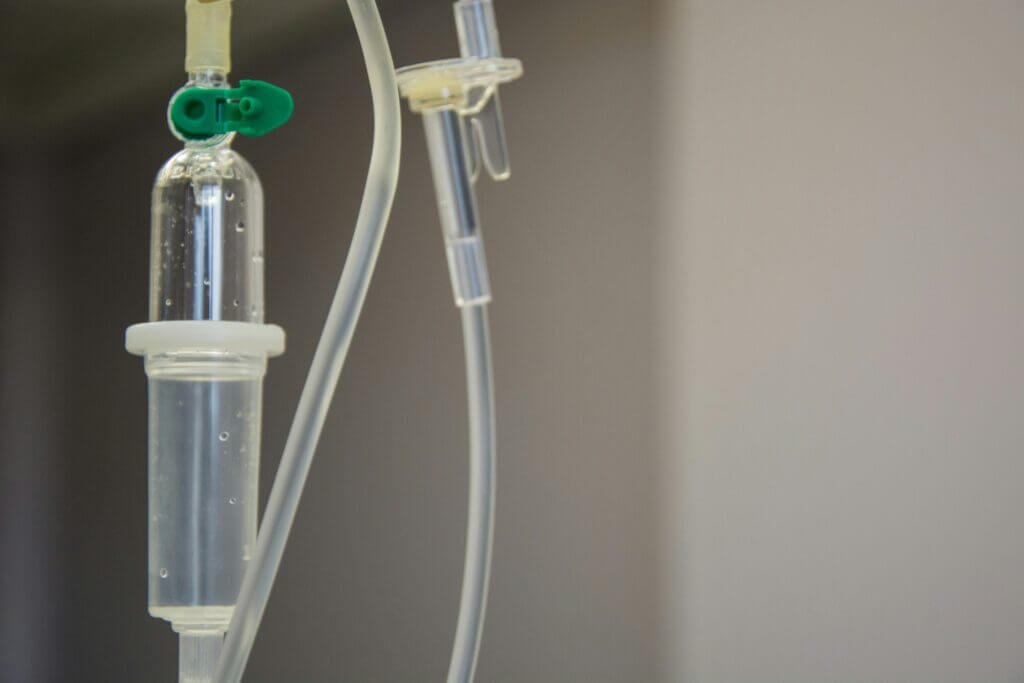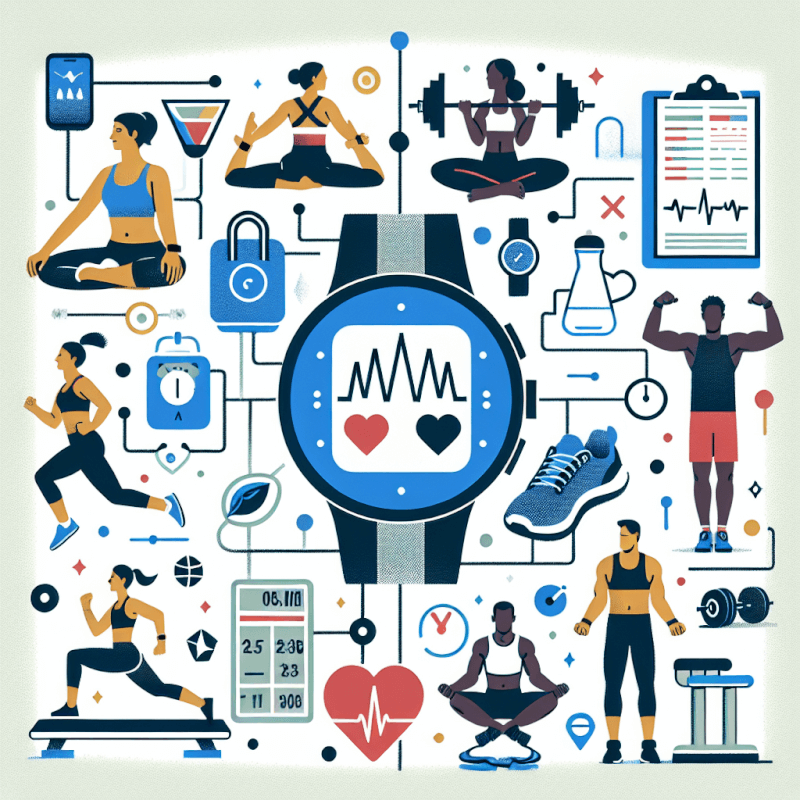Are you wondering how to effectively monitor your progress in fitness and health? It’s a common question many of us ask ourselves as we strive to lead healthier lifestyles. Figuring out the best way to track your progress can be a challenge, but it’s essential to ensure you’re on track towards your goals. By adopting various techniques and using tools such as fitness trackers, journals, and body measurements, you can gain valuable insights into your fitness and health journey. Let’s explore these methods further to help you monitor your progress effectively and stay motivated along the way.

Set Clear Goals
Setting clear goals is crucial when it comes to monitoring your progress in fitness and health. By defining your objectives, you have a clear target to work towards. Start by asking yourself what you want to achieve. Whether it’s losing weight, building muscle, improving endurance, or increasing flexibility, clearly define what success means to you.
It’s important to make your goals attainable. Setting unrealistic goals can lead to frustration and a lack of motivation. Break down your long-term goals into smaller, achievable milestones. This allows you to celebrate your accomplishments along the way and helps to maintain your enthusiasm.
To ensure that you stay on track, set a timeline for your goals. By setting deadlines, you create a sense of urgency and accountability. This helps you stay focused and motivated to reach your desired outcomes. Just make sure that your timeline is realistic and allows for gradual progress rather than rushed results.
Track Your Physical Activity
Tracking your physical activity is a great way to monitor your progress. By keeping a record of your workouts, you can see how consistent you are, identify patterns, and make adjustments as needed. There are various methods you can use to track your physical activity effectively.
One option is to use a fitness tracker. These wearable devices are designed to monitor and record your daily activity levels, such as steps taken, distance walked, and calories burned. This data can provide valuable insights into your overall activity levels and allow you to set specific goals for improvement.
Another method is to keep a workout journal. This can be as simple as writing down the exercises you performed, the duration of each workout, and any notes or observations about how you felt during the session. A workout journal not only helps you keep track of your progress but also serves as a motivational tool when you look back and see how far you’ve come.
Lastly, mobile apps can be a convenient way to track your physical activity. There are numerous fitness apps available that allow you to log your workouts, set goals, and even provide guided workouts. These apps often sync with other devices or platforms, making it easy to access and analyze your data.
Monitor Your Body Composition
Monitoring your body composition is an essential aspect of tracking your progress in fitness and health. It involves measuring and assessing the different components that make up your body, such as body weight, body fat percentage, and muscle mass.
Measuring body weight is a straightforward way to track changes in your overall mass. It’s important to note that weight alone does not provide a complete picture of your progress, as it doesn’t distinguish between fat and muscle. However, when used in conjunction with other assessments, it can contribute to a more comprehensive understanding of your body composition.
Calculating body fat percentage is a more specific indicator of your overall health and fitness. It gives you an idea of how much of your body weight is made up of fat versus other tissues. There are various methods to measure body fat percentage, ranging from simple handheld devices to more advanced techniques like DEXA scans or hydrostatic weighing. Choose a method that suits your needs and consistently track your body fat percentage to see changes over time.
Tracking muscle mass is equally important, especially if your goal is to build strength and increase lean body mass. Monitoring your muscle mass allows you to assess whether your training and nutrition plan is supporting muscle growth. Methods such as bioelectrical impedance analysis or body circumference measurements can provide estimates of muscle mass changes.
Assess Your Cardiovascular Fitness
Evaluating your cardiovascular fitness is crucial for monitoring your progress. A healthy cardiovascular system is essential for overall health and can greatly impact your ability to perform physical activities and endure endurance-based exercises. There are various methods you can use to assess your cardiovascular fitness effectively.
Performing a cardio test, such as a timed run or a cycling test, can help determine your cardiovascular endurance. These tests typically involve measuring the time it takes for you to complete a specific distance or the maximum distance you can cover in a given timeframe. Regularly repeating these tests allows you to track improvements in your cardiovascular fitness over time.
Monitoring your heart rate is another valuable tool. Your heart rate provides insight into the intensity of your workouts and how effectively your cardiovascular system is functioning. During exercise, aim to maintain a target heart rate zone that is appropriate for your age and fitness level. Over time, as your fitness improves, you may notice that your heart rate is lower at the same level of exertion, indicating an enhancement in cardiovascular fitness.
Tracking workout intensity is also essential when assessing your cardiovascular fitness. This can be done using ratings of perceived exertion (RPE) or heart rate zones. By recording your perceived effort or heart rate during different types of workouts, you can monitor changes in intensity levels and ensure that you are challenging your cardiovascular system adequately.

Evaluate Your Strength and Power
Evaluating your strength and power is essential for monitoring your progress in building muscular strength and enhancing athletic performance. There are several methods you can use to assess your strength and power effectively.
Taking strength tests, such as the bench press, squat, or deadlift, allows you to measure the amount of weight you can lift for a specific number of repetitions. These tests provide a baseline of your current strength and can be repeated periodically to track improvements. By gradually increasing the weights used, you can monitor progress and make adjustments to your training program as needed.
Measuring your one-rep max (1RM) is another common method to evaluate your strength. The one-rep max is the maximum amount of weight you can lift for a single repetition with proper form. This test is typically used for compound exercises like the bench press, squat, or deadlift. By periodically testing your 1RM, you can track increases in strength and make informed decisions about your training load.
Tracking improvements is essential when assessing your strength and power. By regularly recording the weights you lift, the number of repetitions performed, or the intensity of your workouts, you can determine if you are making progress towards your strength goals. Additionally, incorporating exercises that focus on power, such as plyometrics or Olympic lifts, can also help assess and improve your explosive strength.
Measure Your Flexibility
Flexibility plays a significant role in overall fitness and injury prevention. Assessing and monitoring your flexibility allows you to identify areas that may need improvement and track progress over time. There are several ways you can measure your flexibility effectively.
Performing stretching exercises regularly is a great way to improve flexibility and monitor progress. Different stretching techniques, such as static, dynamic, or proprioceptive neuromuscular facilitation (PNF) stretching, can target various muscle groups and increase range of motion. As you incorporate stretching into your routine, monitor how far you can comfortably stretch and track any improvements in flexibility.
Using flexibility tests, like the sit-and-reach test or the shoulder flexibility test, can provide quantitative measurements of your flexibility. These tests typically involve measuring the distance reached, angles achieved, or assessing joint mobility. By periodically repeating these tests, you can determine if your flexibility is increasing and adjust your stretching routine accordingly.
Monitoring your range of motion during exercise is another effective way to assess your flexibility. Pay attention to how easily you can perform exercises that require flexibility, such as deep squats or overhead reaches. If you notice improvements in your range of motion, it indicates an increase in flexibility. Regularly documenting your range of motion can help you track progress and identify areas that may need additional attention.

Assess Your Endurance
Evaluating your endurance is crucial for monitoring your progress in activities that require sustained effort over a period of time. Endurance training can improve cardiovascular fitness, muscular stamina, and overall performance. There are several methods you can use to assess your endurance effectively.
Taking endurance tests, such as a timed run, a cycling endurance test, or a swimming distance challenge, allows you to measure your ability to maintain activity for an extended period of time. These tests provide a benchmark for your current endurance level and can be repeated periodically to track improvements. By aiming for faster times or longer distances, you can monitor progress and adapt your training accordingly.
Tracking workout duration is another important tool when assessing your endurance. By recording the length of your exercise sessions, you can monitor whether you are progressively increasing the duration over time. Gradually extending workout durations allows your body to adapt and build endurance. However, it’s essential to listen to your body and avoid overtraining, as this can lead to fatigue and decreased performance.
Monitoring your energy levels is also crucial for assessing your endurance. Pay attention to how you feel throughout your workouts and how quickly you recover after exertion. If you notice an increase in energy levels or a faster recovery time between workouts, it indicates improvements in endurance. Conversely, consistently low energy levels or prolonged recovery periods may indicate a need to adjust your training or nutrition.
Evaluate Your Rest and Recovery
Rest and recovery are essential components of any fitness and health program. Proper rest allows your body time to repair and rebuild, enhancing performance and reducing the risk of injury. Monitoring your rest and recovery can help ensure that you’re giving your body the time it needs to heal and adapt.
Monitoring your sleep quality is crucial for assessing your rest and recovery. Aim for consistent, restful sleep and track the number of hours you sleep each night. By consistently obtaining quality sleep, you provide your body with an opportunity to repair tissues, replenish energy stores, and enhance overall recovery.
Assessing your recovery rate can provide insights into how effectively your body is adapting to training. Keep track of how quickly your heart rate returns to baseline after exercise or intense physical activity. A faster recovery rate indicates improved cardiovascular fitness and efficient recovery mechanisms. Regularly monitoring your recovery rate can help you gauge the effectiveness of your training program and make adjustments as needed.
Tracking your resting heart rate is another useful tool when evaluating your rest and recovery. Resting heart rate is the number of times your heart beats per minute when you are at rest. By noting your resting heart rate each morning before getting out of bed, you can establish a baseline. Over time, if you notice a decrease in your resting heart rate, it may indicate improved cardiovascular fitness and enhanced recovery.

Monitor Your Nutrition
Nutrition plays a vital role in overall health and fitness. Proper fueling and nourishment support your training efforts and facilitate progress towards your goals. Monitoring your nutrition allows you to assess whether your dietary choices align with your fitness and health objectives.
Keeping a food diary is an effective way to monitor your nutrition. Record what you eat and drink throughout the day, including portion sizes and ingredient details. Additionally, note any observations about how certain foods make you feel or how they impact your performance. By consistently logging your food intake, you can identify patterns, highlight areas for improvement, and make adjustments to optimize your nutrition.
Tracking macronutrient intake can be particularly useful when evaluating your nutrition. Macronutrients include carbohydrates, proteins, and fats, which provide energy and support various bodily functions. By monitoring the balance of these macronutrients in your daily diet, you can ensure that you are meeting your nutritional needs. Adjusting macronutrient ratios based on your goals and performance can contribute to better progress and overall well-being.
Evaluating caloric balance is another important aspect of monitoring your nutrition. Caloric balance refers to the relationship between the number of calories you consume versus the number of calories you expend through physical activity. If your goal is to lose weight, you need to create a calorie deficit. Conversely, if your goal is to gain weight or build muscle, you need to consume a caloric surplus. Tracking your caloric intake and expenditure can help you adjust your diet to achieve the desired balance.
Seek Professional Guidance
While self-monitoring is an effective way to track progress in fitness and health, seeking professional guidance can provide valuable insights and support your overall journey. Consulting a fitness trainer or exercise professional can help optimize your training program, ensure proper form, and provide motivation. They can also assist you in setting realistic goals and developing a personalized plan.
Visiting a healthcare professional, such as a doctor or registered dietitian, is essential for comprehensive monitoring of your health and fitness. They can perform necessary medical assessments, measurements, and tests to evaluate your overall well-being. They can also provide personalized advice, make recommendations, and address any underlying health concerns that may impact your progress.
Getting regular check-ups is crucial when monitoring your progress in fitness and health. Regular health screenings, such as blood tests, body composition assessments, or cardiorespiratory evaluations, allow for a thorough assessment of your current health status. By regularly checking in with healthcare professionals and following their recommendations, you can ensure that you are on the right track and address any potential issues.
In conclusion, monitoring your progress in fitness and health effectively requires setting clear goals, tracking various aspects of your physical activity, assessing body composition, evaluating cardiovascular fitness, measuring strength and power, monitoring flexibility, assessing endurance, evaluating rest and recovery, monitoring nutrition, and seeking professional guidance. By incorporating these strategies into your routine, you can stay motivated, make informed decisions, and make progress towards your fitness and health goals. Remember, consistency is key, and the journey to optimal health and fitness is a lifelong process.



